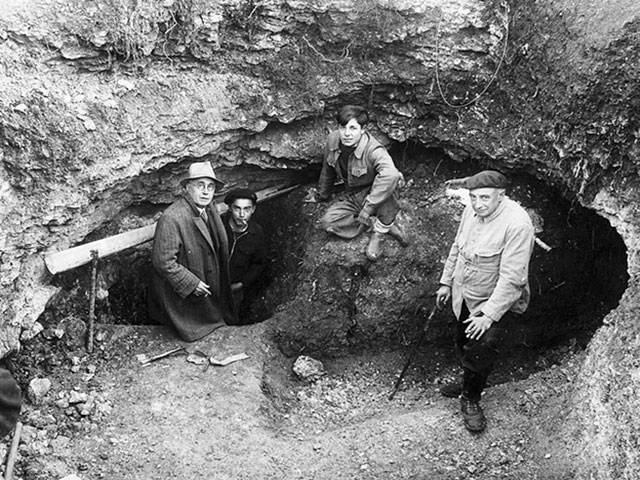“No amounts of stone and bone could yield the kinds of information that the paintings gave so freely.”
–Mary Leakey
Image: SciHistory
On September 12, 1940, four teenagers followed their dog down a hole near Lascaux France and discovered 17,000-year-old paintings.
Michael Ravidant, an 18-year old garage apprentice was walking his dog when he ran down a hole. Michael explored the hole with his friends and found what experts now call “the cradle of art”. In a cave complex arranged around a main cave about 20 meters long and five meters high were what turned out to be more than 2,000 painted and engraved images of animals and abstract symbols. The paintings are almost all of animals. There is only one human and no flowers, trees, or countryside. The meaning of most of the abstract symbols is unknown.
The cave complex was opened to the public in 1948 and soon attracted about 1,200 visitors a day. However, the cave art soon began getting damaged, and the cave was closed once again. In 1983, a replica of the Lascaux cave was created. Lascaux became a UNESCO World Heritage Site in 1979. Only a few hundred meters away from the original cave, Lascaux II is a virtually identical replica with 80 per cent of the original images reproduced. It attracts about 250,000 visitors a year.






